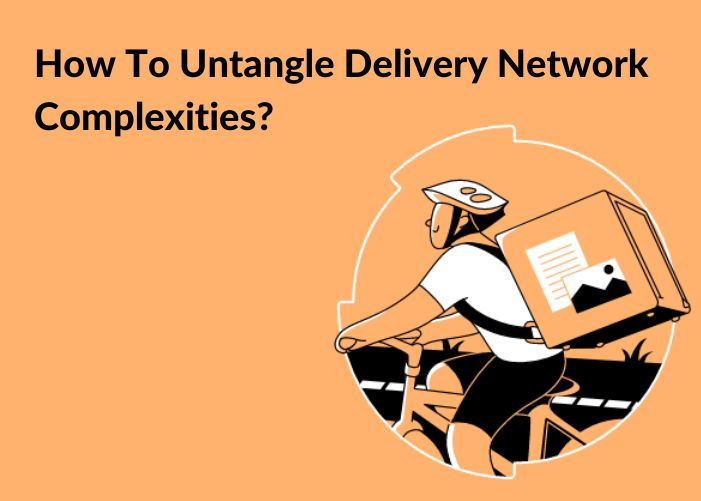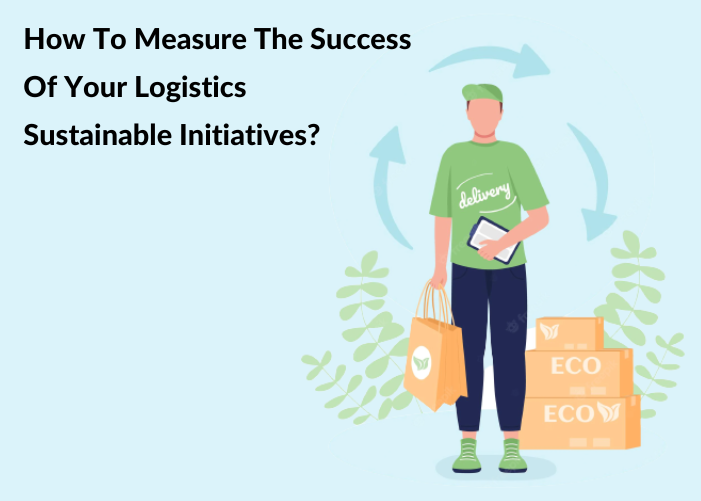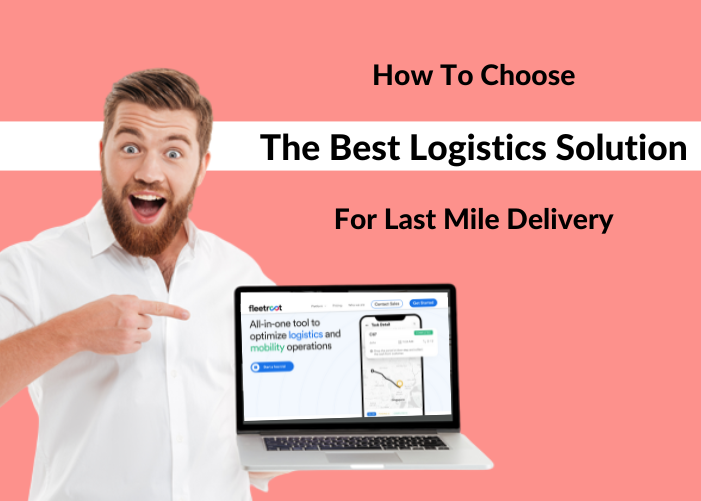1) Drop density: a critical metric for measuring the efficacy of your Logistics and Delivery Operations
For all the tools that you use – including automation and the latest software – the objective remains the same i.e. to minimize the total delivery time (including stops, loading/unloading, driving, etc.)
You want a high drop density because it minimizes operating costs and helps you run a profitable business. There is already enough pressure on margins, so anything that helps manage profitability must get the requisite attention.
Optimizing your last-mile delivery is the most effective way to improve the drop density of your deliveries. And, in this regard, modern, automated, data-driven last-mile software has proven to be invaluable.
The Delivery Management Software market is expected to grow from $1.6 bn in 2019 to more than $4 bn in 2027.
Importance of drop-density
Don’t get nervous – whether you outsource your delivery operation to 3PLs, run your own, or manage a multi-carrier delivery operation – you are likely already paying very close attention to your drop density! This article is only to reiterate the important signposts to help you!
- For example, the ratio of area covered to the number of deliveries is always a telling statistic in measuring how effective your delivery operation is. Since it is a holistic metric, it also includes several other KPIs such as total cost, mileage traveled (etc.)
- Optimizing your drop density will, therefore, naturally need you to look at all the other KPIs and move them along in the right direction. This becomes even more important when if you operate in industries like online groceries, where the margins are always under pressure.
2) Increased usage of dark stores and micro-fulfillment centers.
Simple logic states that the closer your final destination is to your fulfillment center, the quicker and cheaper your delivery model will be. As a result, using micro-fulfillment centers is a great option.
In fact, when you are in market segments like online groceries or online food delivery, where unit economics are centered around 15-minute delivery models, using an extensive network of micro-warehouses becomes absolutely crucial.
Industry experts often claim that the effective service area of a micro-warehouse network is approximately 3.5 miles. Research indicates that a Next-Day delivery model in an urban area would typically require at least 40 micro-fulfillment centers! Thus, you can imagine how many such centers are needed to maintain a successful 15-minute delivery model.
And, given that the juggernaut of Ecommerce and home deliveries is only going north, the number of delivery company competitors is increasing every day. Delivery company owners have said that their delivery drivers often spend entire 8-hr shifts delivering parcels within an area of a 15-min walking radius!
Therefore, from the environmental perspective, using e-vehicles and zero-emission vehicles becomes all the more important. Growing awareness among customers has also seen them asking about the type of vehicles that delivery companies use.
3) Managing delivery slots for greater drop-density as well as lower emissions:
As mentioned above, while increasing drop density is crucial for operational efficiency, so is managing emissions. The latter is now one of the many non-negotiable factors (e.g. along with distance, traffic, weather, travel times, etc.) that need to be balanced while optimizing delivery routes and schedules.
Here is where modern last-mile delivery software – with its data-analytics-driven algorithms and capabilities – is the new magic sauce for Logistics and Delivery firms. This helps in “slot-steering” i.e. promoting the delivery windows/slots that would improve your drop density.
Using systems that are inter-connected and “talk” to each other in real-time (e.g. a three-way connection between your last mile delivery software, order management system, and the MIS of your 3PL) gives you a highly capable and powerful tool.
Here is an example: If you see that one of your delivery drivers already has a confirmed delivery in Sector-5 between 1-2 pm, you could promote that delivery window to bunch together other delivery jobs to Sector-5 between 1-2 pm. There are myriad ways to promote it, from offering a discount to showing that would be more environmentally friendly.
4) Using last-mile software to achieve greater drop-density:
As explained above, the key to achieving higher drop density is route optimization. Last-mile costs can become hugely prohibitive and inefficient because plotting numerous stops in densely populated urban areas is an extremely difficult task.
Now, a key tool to achieving route optimization is the all-powerful, automated, and algorithm-driven last-mile software! The powerful algorithms of today can do all the heavy lifting required.
However, algorithms are dependent on data. Therefore, the data that you generate and record across your delivery processes becomes that much more important.
Good data enables you to improve operational efficiency, reduce costs, hire the correct number of drivers and vehicles, make better forecasts about expected demand-supply patterns, and achieve customer satisfaction by maintaining a positive customer experience.
5) Last-mile software: optimizing your deliveries
As its core function, last-mile software uses modern automation and tools such as AI and ML to achieve the golden mean of balancing all variables such as routing, delivery scheduling, real-time tracking, task allocation (etc.), thereby minimizing costs and improving efficiency.
With an efficient combination of a centralized dashboard as well as de-centralized access to remote, or global, teams as required, it provides company management with a holistic view of managing their daily operations.
The algorithms of this software are powerful tools that automate all processes to identify the best possible schedules for daily deliveries/drops. They are also flexible enough to keep investigating new solutions as ecosystems, consumer preferences, and competitive landscapes evolve.
Additionally, since all data is recorded and available for study, it helps in analyzing Actual vs. Planned, thereby helping to correct deviations, and tweak policies for greater efficiency, and innovation in the future.
Some popular techniques that achieve the ideal drop density are:
- Extensively using tools like automated routing, real-time tracking, self-service consumer tracking
- Using a judicious mix of multi-carriers to achieve optimal use of various fleets and vehicle types, thereby minimizing operating costs and maximizing fuel efficiency
- Efficiently bunching deliveries/goods together via automated last-mile routing
- Using real-time communication to maintain transparency between dispatch teams, onsite teams, drivers, and customers
Conclusion: As is evident, drop density is a key metric in achieving profitable operations for delivery firms. Deploying tools like delivery software is key to achieving such targets.




